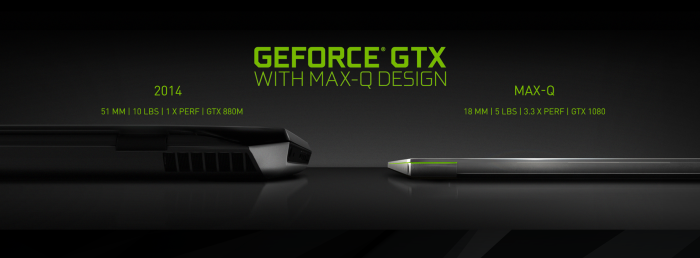
A while back, Nvidia announced Max-Q, its first wholehearted attempt to integrate a next-generation chipset on a range of slim machines. Max-Q was not necessarily a technological revolution, but a set of design rules and minor tweaks. However, it did promise gaming enthusiasts the possibility of slim, but powerful gaming notebooks – in theory, at least. Nvidia went as far as to talk about 18 mm thick notebooks with chipsets such as the latest Pascal powered GTX 1080.
Even if some showed scepticism towards Nvidia’s claims, big names such as Asus, Acer, MSI, Gigabyte or Clevo jumped into the Max-Q bandwagon. Thus, the first slim, but “truly powerful”, notebook models came to be, “astounding” us with names such as Zephyrus, Triton or Stealth Pro.
The much-touted Nvidia Max-Q is finally here and we are happy to report that the tech giant delivered on most of its promises, but unfortunately, achieved this by limiting the performance of these cards, sometimes by a relatively large margin.
Moreover, the main concerns for gamers, which are related to battery life, potential heating problems and price, seem to have remained unchanged between Max-Q and non-Max-Q models. For now, it seems Max-Q design is nothing more than some underclocking, coupled with a series of questionable design choices, which are meant to impact slimness, performance, and cooling.
After the weird looking Zephyrus was reviewed by multiple magazines, the conclusions were similar to the audience’s expectations. The Max-Q powered machine is indeed impressive for a slim notebook, save for the cooling and battery life. Furthermore, the Max-Q 1080 chipset would perform at around 72-83% of a regular GTX 1080 chipset, according to the quoted Tom’s Hardware article, which means it delivers slightly more performance than a GTX 1070 (laptop version). At this point, this is mostly true for the other Max-Q machines. Each Max-Q video card offers a lower performance by 10-25% compared to its non-Max-Q variant, with the GTX 1080 leaning more towards the 25%, while the GTX 1060 leans more towards the 10%, there are also differences coming from each producer’s design choices, rather than hardware options.
Under scrutiny, Max-Q seems to be more of a tech demo than the future of notebook gaming. Although the technology is definitely a step in the right direction, this is not the leap gamers have been promised. For years now, laptop gamers have requested better battery life, better cooling, and, if possible, desktop performance.
It is not that slimness is not something we would all love to have, but it is definitely not the main reason someone would buy a gaming notebook.
You can check the full specs and options of Asus ROG Zephyrus GX501VI on our website. Moreover, ASUS GL502VS offers very similar performance and portability for $500 less: Asus ROG Zephyrus GX501VI vs Asus ROG GL502VS.

Leave a Reply